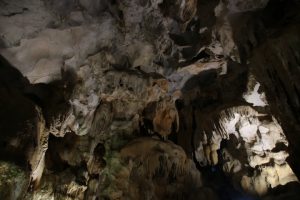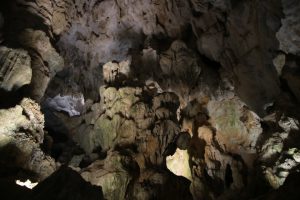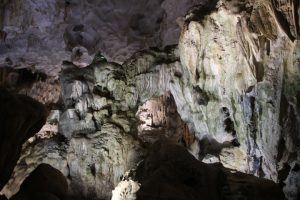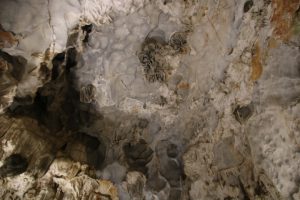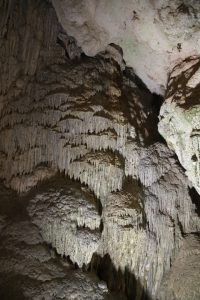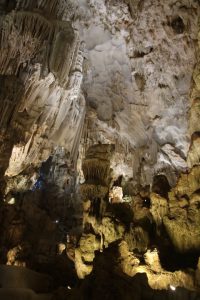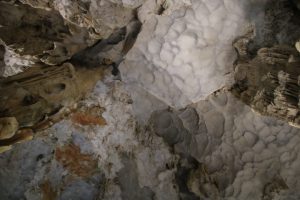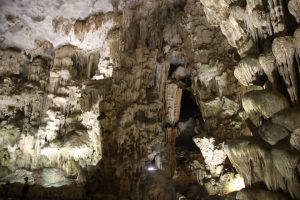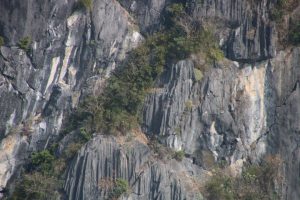We had arrived in Halong Bay, Vietnam, before we awoke and witnessed early morning activities and the front line of limestone pillars that we will explore this afternoon.
At lunchtime we departed, on board a converted fishing junk, for a cruise around Halong Bay. This included lunch of local produce. Delicious! Halong Bay is, according to the guide books, ‘majestic and mysterious’ but only if one listens to the guides who name rock pillars after animals when it really is a chance of erosion.
The towering limestone pillars are the remains of a primeval mass of limestone – more than likely the eastern side of the Sea of Tethys. The evidence in the rocks shows uplift and folding from the southeast, just as for example, on the south coast of Crete. This allowed a cascading mass of seawater, over a very long period of time, into the already existing limestone caverns. Eventually these were hollowed out, their roofs collapsed and hence we have the remains of the cavern walls today. Now, exposed to daylight, it is possible to see the eroded and weathered remains of stalactites, stalagmites and pillars on the exposed rock.
Inside however, it is truly majestical. The tufa (thin sheets of calcium carbonate), stalactites, stalagmites and pillars are many thousands of years old, but are beautifully lit and not ‘messed about with’. Brilliant!!
The legend has it, that this is where the ‘dragon descends into the sea’. The myth tells of a great mountain dragon that charged towards the coast with its flailing tail gorging out valleys and crevasses. In many respects this is what we have just related but we have told the story from a geological point of view. Geology says that this is an example of Karst (limestone) scenery made of up of clints and grykes. The clints are the blocks of limestone and the grykes the gaps between them. This enables chemical weathering to widen the grykes which takes a very long time. Here we have the sea involved in an express erosion incident. Just a thought! In the Valley of the Kings near Luxor (Egypt) the tombs are excavated along the grykes because it provides a relatively easy access to the interior of the limestone mass.






